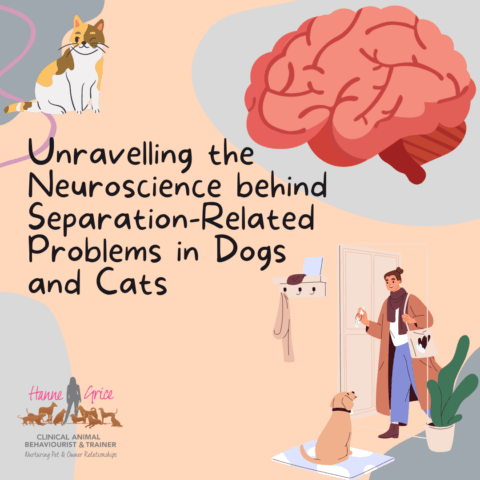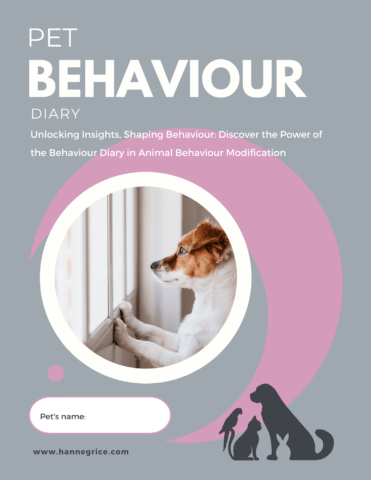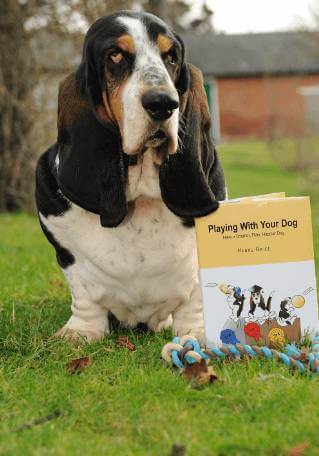Separation-related problems can significantly impact the well-being of our beloved four-legged friends. The different issues that can manifest includes but are not limited to anxiety, destructive behaviour, vocalisation, and other distressing symptoms when they are separated from their owners. Interestingly, for some cats or dogs, these manifestations may be less obvious to their owners, where the animal may be internalising their stress at being left. However, if we were to take physiological measurements to understand if the pet was experiencing stress at being home alone, such as blood cortisol levels before and after being left, or a saliva-based test to measure salivary immunoglobulin, these may indicate that the pet that looked like they were ‘resting’, was in fact stressed by the separation from their owner. The stress response is a normal part of daily life, and is only harmful when triggered too intensely or for too long – this is where ‘trigger stacking’ can occur.
By delving into the fascinating world of neuroscience, we can gain a deeper understanding of why these may problems occur and explore effective strategies to help our cats and dogs cope with separation-related problems.
Understanding the Neurological Causes
The neurobiology underlying separation-related problems is complex and involves several interconnected systems in the brain. Research has shown that the limbic system, particularly the amygdala and hippocampus, plays a crucial role in regulating emotions, fear, and memory. When animals experience separation from their owners, these brain regions may become hyperactive, leading to heightened anxiety and stress responses.

Neurotransmitters such as serotonin and dopamine also contribute to separation-related problems. Serotonin, known as the “feel-good” neurotransmitter, regulates mood and emotional states. Reduced serotonin levels have been associated with anxiety disorders in both humans and animals. Similarly, dopamine, responsible for motivation and reward, can play a role in the anticipation of anxiety-inducing situations.
The Impact of Early Life Experiences
Early life experiences can shape an animal’s brain and influence their response to separation. For puppies and kittens, inadequate socialisation, premature separation from the mother, or traumatic experiences during critical developmental periods including ‘traditional’ training methods such as letting the puppy ‘cry it out’, can increase the risk of developing separation-related problems later in life. These experiences can impact the formation of neural circuits involved in emotional regulation and stress responses.
Individual Differences
While the neuroscientific understanding of separation-related problems is advancing, it is essential to acknowledge individual variations in animals’ responses and the presence of conflicting findings. Although there may be commonalities, just like us, each dog or cat has their own unique genetic predisposition, temperament, and past experiences that influence their susceptibility to separation-related problems. Therefore, a comprehensive assessment of the animal’s history and behaviour is crucial to tailor effective treatment plans. This is where the role of the breeder and, subsequently, the owner in getting it right from the start with the kitten and puppy is significant, and seeking appropiate support from a trainer or behaviourist to support.
To learn how to avoid such problems with your puppy, check out my Puppy Package – my online course aimed at new owners who want to have a sociable, happy and well-rounded pooch.
Addressing Separation-Related Problems
If you are experiencing any issues with your pet when they are left home alone, there are various considerations and ways you can approach this – as discussed in my podcast with The Pet Perspective. Outlined below are some of the common behaviour modification approaches, however, this is in no way a ‘one-size fits all’ approach when it comes to helping your pet. So, owners should seek advice from their veterinary surgeon and be guided by an assured and certified behaviourist.
- Typical Behaviour Modification Techniques:
- Gradual desensitisation and counterconditioning: Gradually exposing the animal to short periods of separation and pairing it with positive experiences to change their emotional response.
- Environmental enrichment: Providing engaging toys, interactive puzzles, and physical exercise to alleviate boredom and anxiety during periods of solitude. Note: Sometimes where owners may have previously tried to use food to ‘occupy’ their pet when left, this may unwittingly create an association that the food is a predictor the owner is leaving. Consequently, the food appearance can induce stress before the owner has left, or the food remains untouched when the owner returns. This is why professional support is critical for owners to avoid such situations.
- Establishing a consistent routine: Predictable daily schedules such as walking, playing, feeding and sleeping schedules, can help reduce anxiety by providing a sense of security and stability.
- Medications and Nutraceuticals:
- Consultation with a veterinarian or veterinary behaviourist may lead to the consideration of anti-anxiety medications or supplements, referred to as nutraceuticals, to manage severe separation-related problems.
- Medications, such as selective serotonin reuptake inhibitors (SSRIs), can help regulate neurotransmitter imbalances and reduce anxiety levels in some cases, which then facilitates learning.
Key take-away

By understanding how to avoid separation-related problems in the first place, we can help our furry companions to better cope when it comes to being home alone. However, most dogs and cats do enjoy their owner’s company so want to be with them for the majority of the time – that’s thanks to the thousands of years of domestication. So, if you have spotted that your pet is starting to show signs of concern (e.g. pacing, panting, lip licking, whining, jumping up, etc) as you are getting ready to leave, seek help from a qualified professional. Check out the Animal Behaviour and Training Council website for a list of practitioners in your local area.
Supporting resources
To support your behaviour modification programme, check out my new Pet Behaviour Diary – which enables owners/keepers and those working with animals, ways to track their training, make observations and review progress.
References:
- Sherman, B.L., Mills, D.S. (2008) Canine Anxieties and Phobias: An Update on Separation Anxiety and Noise Aversions, Veterinary Clinics of North America: Small Animal Practice, Volume 38, Issue 5, pp 1081-1106.
- Palestrini, C., Minero, M., Cannas, S., Rossi, E., and Frank, D. (2010) Video analysis of dogs with separation-related behaviors, Applied Animal Behaviour Science, Volume 124, Issues 1–2, pp 61-67.
Learn more about our classes

Get Hanne's book, clothing and more
Hanne has a number of publications including her book Playing With Your Dog to help owners work out the games that are best suited for their pet to play throughout his life, from puppyhood to old age, available from Amazon. Check out Hanne's range of contemporary casuals The Collection – for pet lovers made from recyclable, organic materials that are sustainably sourced.


